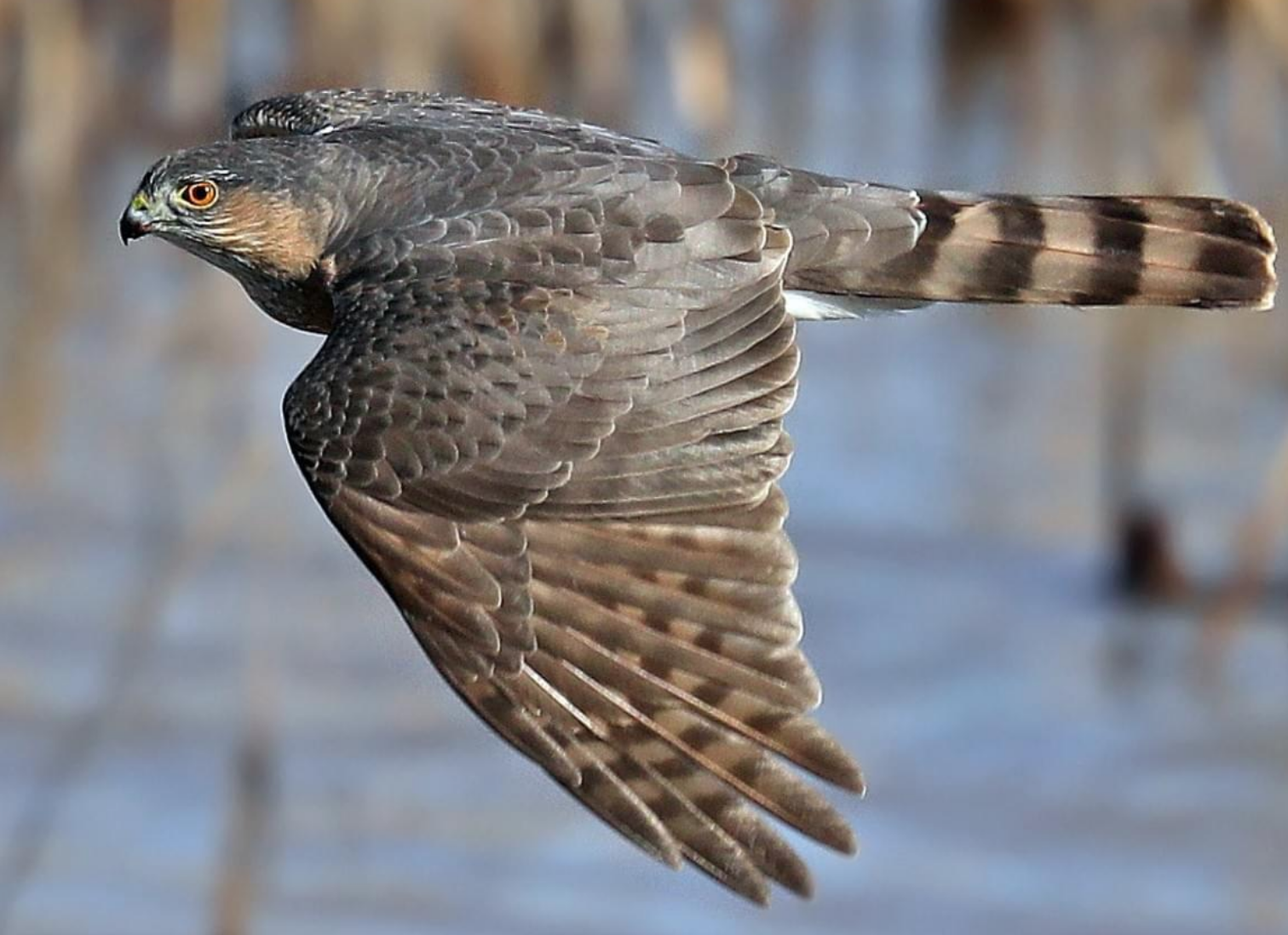Contributed by Bill Hamilton
For the past ten years we have had a resident pair Sharp-shinned Hawks around my house. I don’t know if the birds that are here today are the same individuals that I first saw back in 2008, but they could be. The average life span of a Sharp-shinned Hawk is only three years, but individuals that are ten years old or older are not uncommon. The relative safety of my woodlot and field here in Armstrong County (no Red-tailed Hawks or other large raptors to prey on the Sharp-shinned Hawks, few human-made impediments that could cause accidents) and the reliable, year round abundance of small birds at my bird feeders, make this site ideal for these active predators.
Many references talk about sharp-shins as being a migratory species in our area. Migration
maps show the Sharp-shinned Hawks flying to the southern US or all the way to Mexico or Central America each the winter. Censuses of the sharp-shin’s more recent migrations, though, indicate that the northern ranges of the hawk are increasingly supporting the bird through the winter (fewer Sharp-shinned Hawks are being counted in the southerly migration masses).
Possibly, this reflects the impact of bird feeders generating a rich and predictable source of winter prey for the sharp-shins. This enables the bird to skip the energetically demanding and perilous migration. This consensus fits with my observations here in Apollo, Pennsylvania!
We have a tall, black locust tree out on the northern edge of our property that is used by many bird species for a lookout and for displays. Each February, the female Sharp-shinned Hawk (easily recognizable because of her larger size) perches and calls to the male. We have even seen the birds mating in the branches of the locust! In all these years, though, we have not seen any sharp-shin fledglings. I don’t know if this means that the hawks have not been successful in their reproductive efforts, or if it means that the parental birds are just very cautious about where they take their fledges!
Crows and Blue Jays vigorously harass and chase the sharp-shins. The hawks, though, have a steady rate of success in their hunting and have a number of regular locations around my field where they take their captured prey to be plucked and eaten. Each week I clean up piles of feathers at these spots. Mourning Doves are the most common prey taken in my yard, and Cardinals are a close second. Tufted Titmice and Chickadee feathers (such small meals!) also show up occasionally in the feather piles.
Sharp-shinned Hawks are ambush predators. A typical hunting strategy is for the bird to perch in an inconspicuous place (like a well sheltered limb in a coniferous tree (my large Norway spruce is a favorite spot for my sharp-shins)) and then burst out unexpectedly onto its prey. I have only seen the sharp-shins here take small birds although it is said that they also eat small mammals, reptiles and even insects. Sharp-shins are extremely quick and acrobatic chasing their prey. They often take birds in the air but may even pursue and capture on them foot if needed. Their pursuit, though, is very short-termed. If a capture is not quickly made, the hawk breaks off its chase and returns to another ambush location. We regularly see a large number of failed hunting attempts before either of our hawks are successful.
Photo credit: Matt Davis - Macaulay Library
